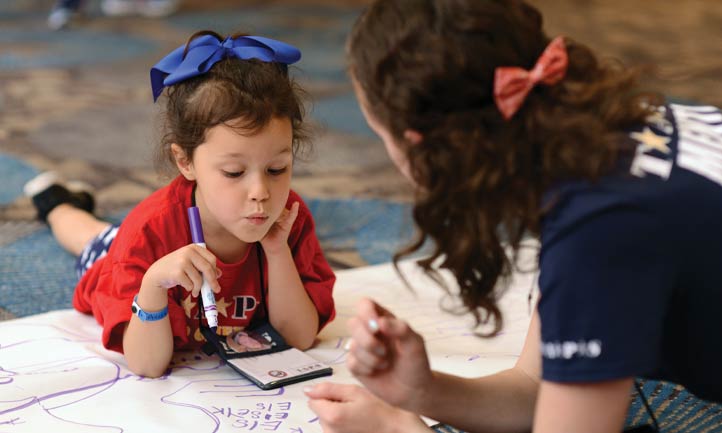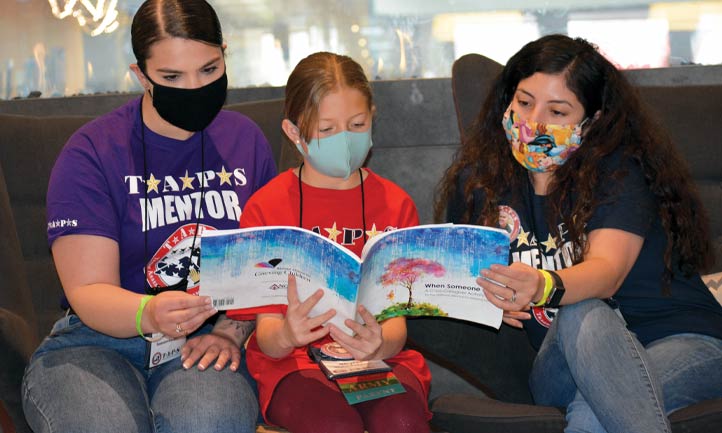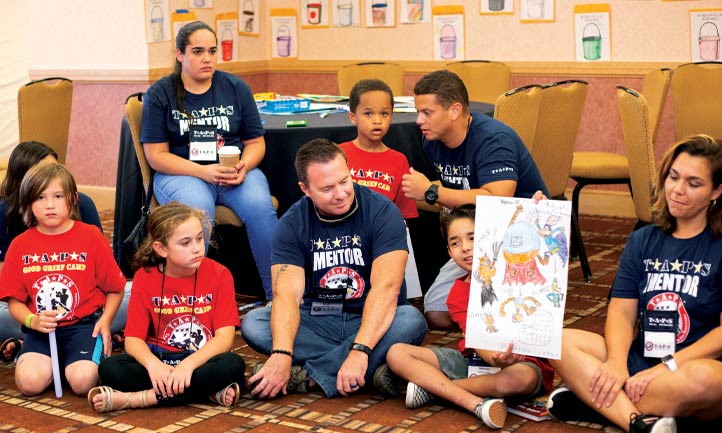Klinger’s Korner: The Strength of the Parent-Child Relationship
Author: TAPS

“Your children are not your children.
They are the sons and daughters of life’s longing for itself.
They come through you, but not from you...
You are the bows from which your children as living arrows are sent forth.”
~ Kahlil Gibran, “On Children,” in The Prophet (Knopf, 1923)
Through this excerpted quote from his poem, “On Children,” Kahlil Gibran expresses a hard truth for those of us raising children – that, in reality, we are bringing them up to leave us one day and forge their own paths. As their parents, we are responsible for nurturing them, teaching them right from wrong, and preparing them to “take the helm” as they navigate life’s many challenges. No parent does this perfectly – that is for sure – and, sometimes it feels like we are entirely missing the mark, especially when we are grieving.
If you feel this way, please know that you are not alone. Keeping all of these things in mind, let’s look at three areas where we have the most power and influence in our children’s lives.


Social Cues and Problem Solving
Our children pay attention to how we interact with others and navigate difficulties and problems that might arise in our lives. Have you ever seen your child react to something and think to yourself, "Oh my, they look and sound just like me!"? The saying "Children are keen observers but poor interpreters" suggests that they always watch and take things in, but they are not always great at implementing these lessons to their own lives. Children learn most of their social cues and problem-solving from watching us. Social cues involve interactions with others, such as generosity, kindness, forgiveness, and politeness. Problem-solving skills involves working through solutions to personal challenges and interpersonal conflicts. Often, parents ask us how they can help their children in these two areas. We have the power to help them by modeling the values we want them to one day apply to their lives with friends, family, and coworkers. Consider how you might model these behaviors to them, even in small ways.
Security and Predictability
The death of a family member can interrupt a sense of safety and predictability that may have previously existed in the home. As parents, we wonder what we can say or do for our children to restore our everyday routines. To best establish security and predictability in the home, we can set clear behavior expectations, consistently hold each other accountable for misbehavior, and positively reinforce good behavior.
First, think about the values that are most important in your home. These things may be kindness, sharing, forgiveness, being considerate, or other things that promote healthy interactions. With your children, share why these values are important and agree together to make them “laws of the land.”
We can also develop daily, weekly, monthly, and annual routines to establish a sense of security. Daily, we can create a bedtime routine with our kids. Prioritize this time with them, and they will look forward to it. Alternatively, we may set a time when everyone eats dinner together daily. Weekly, we might have special nights, like movie nights or eating out at restaurants where kids eat for free. Monthly, we could plan a family activity for everyone to do together, perhaps a hike or backyard bonfire. Annually, establish certain special days, which could be holidays, birthdays, or days that were special to your person who died. As parents, we have the power to plan these occasions and set priorities for the family that our children will carry into their adulthood.
Moral Support and Encouragement
As we bereaved know too well, life can be harsh. Being an encourager and moral support to our children can be challenging, particularly when we are struggling ourselves. While our children need to learn to work through life’s difficulties, motivating them along the way is also helpful. Have you ever been relaxing on the couch or enjoying a beautiful day outside when your child keeps saying to you, “Mom! Look at me! Watch this!”? They don’t even expect us to compliment them– they just want us to see them and know that we are watching. That is what encouragement is all about. As parents, we have the power to lift their spirits in ways that no one else can. They will absorb the energy of our words of love, attention, and ability to see them as others cannot.

Remember that we do not have to be perfect; perfection is, in fact, impossible. Yet, we can establish positive relationships with our children, using these three areas as a starting point. We can create encouraging and supportive homes that teach healthy social cues and problem-solving while offering safety and security. Children will take these values into their adulthood and one day be a part of their future homes.
 Family Activity: My Favorite Things
Family Activity: My Favorite Things
This interactive activity offers your family a way to learn more about one another and spend quality time together, while doing the things you all love most.
Supplies
- Index cards
- Pens
- Markers
- A bowl
- A calendar
Directions
Pass four index cards, pens, and markers to each family member. Have everyone write a different activity that they like to do on each of their four index cards – with one activity per card. Then, place all cards in a bowl and mix them up. One at a time, have each family member draw an index card out of the bowl, talk about why this activity is fun, and ask who wrote it. Go around the room until you pull each card.
After you finish, decide as a group which activities you can do in the coming weeks and when you can do them together. Mark these special family outings and activities on your calendars. If you would like, you could also have everyone list one bonus activity – something that they loved to do with their person who died. You can include those in the group activity and plan times to do them.
 Family Activity: A Snapshot in Time
Family Activity: A Snapshot in Time
This perspective-building activity offers you and your children a way to identify how you have grown over time – physically, mentally, emotionally, and socially.
Supplies
- Time capsule items
- Paper
- Pen
- Markers
- Tin boxes (ex: lunch box, craft store tin box)
Directions
Have each family member choose an item representing something about themselves or their grief to fill time capsules. They can also select items reminding them of the person who died. On a piece of paper, have each person write down their item and explain why it is important to them, how it reflects who they are, or how it represents their special person. You can also include some sentence starters for each person to complete, such as the following:
When I grow up, I want to be …
What I like to do most with my time is …
My best friend is …
I feel sad when …
I feel happy when …
Place all items and paper with lists and descriptions in tin boxes and seal it – perhaps with tape for a good seal. Use one tin box for each family member. Find a special place around your yard or neighborhood to bury each person’s tin box. On another piece of paper, be sure to write down instructions to where you placed the box, which you can keep somewhere safe and accessible. Mark one year from the day you buried the boxes on your calendars to dig up and open the boxes. On this day the following year, take turns sharing your items and the explanations you wrote about them. See what has changed over the year and what might have stayed the same.
Photos: TAPS Archives
